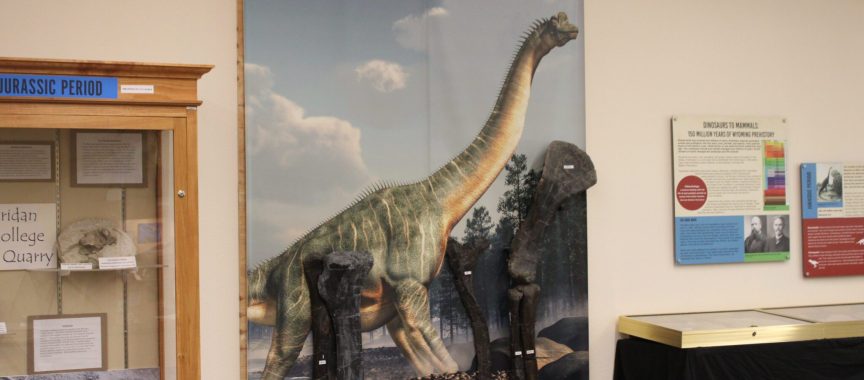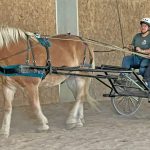News – Sheridan Media

Sheridan now has a Natural History Museum. Once called the Museum of Discovery, the museum is located in the Mohns Center at Sheridan College.
Visitors are greeted by “Paul” the triceratops is in the center of the building entrance. The triceratops is Wyoming’s state dinosaur.

Dave Nicolarsen, curator, talked about the museum.

The museum includes many dinosaur bones, fossils and minerals, as well as a lapidary lap, and a prep lab for cleaning and preparing the bones for display.

Tom Hebert, founder of the Earth Sciences Foundation, who was named director of the museum in April explained what they wanted to do in the museum.
Hebert talked about the dinosaurs.
Thats the only way we move forward as a species, he added. If we stop getting big and making babies our genetic code doesn’t continue, and our species doesn’t proceed. It is a natural instinct in every animal.

Nicolarsen added,
There are several exhibits, dinosaur bones, most found in the Sheridan/Buffalo area, many from the quarry south of Buffalo, where the Allosaurus, Caesar who stands in The Edward A. Whitney Academic Center at Sheridan College, was one found in the quarry.

Some of the bones on display are the actual bones, but some, like the full-sized skeletons, as the triceratops, are casts, mostly because of the weight, Hebert said. But most of the fossil bones in the display cases are actual fossilized bones.
The museum is not just cases with exhibits in them.
Nicolarsen:
The next dig will be on July 12-13.
Hebert talked about the lapidary lab, where rocks are cut and polished. He added that some dinosaur bones are known as ‘dinosaur gem bones’ where the bones are almost agatized and they polish up with beautiful blues and reds and yellows.

This can create a problem of commercialization, with private individuals selling them to the highest bidder. While it is their choice, Hebert felt that the fossils should be in public collections so they can be studied and enjoyed by the public.
New species of dinosaurs are being discovered all the time. “In the last ten years they have been averaging over 45 new species of dinosaurs per year.” Hebert said. There is so much county to cover, and there are not enough paleontologist or enough other people uncovering the bones.
Even the quarry at Buffalo could be explored for many, many years before they found everything that the earth would reveal. Hebert added that research points to only one-percent of animals that lived actually fossilized.
How does one tell a fossil bone from just a rock? Hebert explains one way to tell the difference.
He added that fossil bones have a shape. They look like a bone. Rocks have more jagged edges, bones have more rounded edges. Color is also a factor, bones are usually dark brown, and fossils are heavier than just rocks. “They are very heavy,” Hebert said.

He added that they wanted to get kids interested in some careers like geology, paleontology, archaeology, and they want to get youngsters excited about perhaps making that their eventual career. There are fewer people going into those careers, he added.
One reason Hebert pursues his passion for dinosaurs,
One volunteer, Steve Bradfield, who was working in the prep lab, explained how he put the bone fragments together, he said it was alike a 3-D jigsaw puzzle. He added that anyone interested can come in and learn how they prep the bones for the exhibits.

The Wyoming Natural History Museum is located in Sheridan, at Sheridan College in the Mohns Center. Hours are 9 a.m. to 1 p.m. Everyone is welcome to come out and see the exhibits and enjoy the hands-on displays.
For more info and volunteer opportunities, tour and lecture appointments call Dave Nicolarsen (307) 751-7723. the website is found at Museum of Discovery – INTRO
Last modified: July 5, 2025






